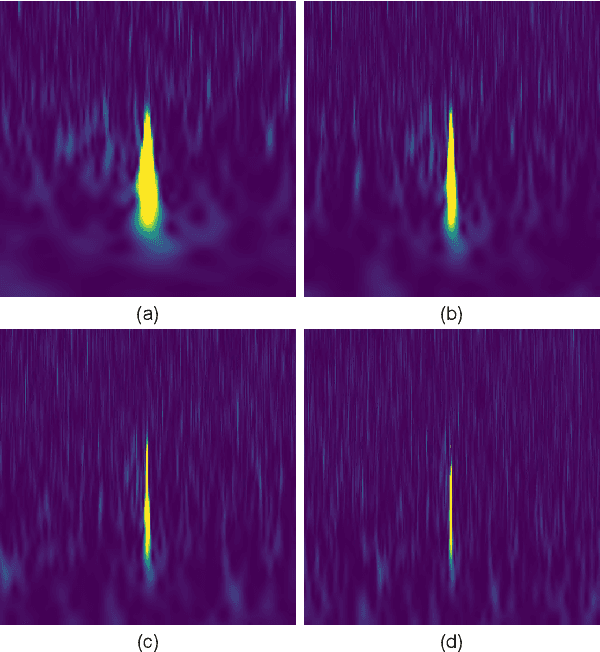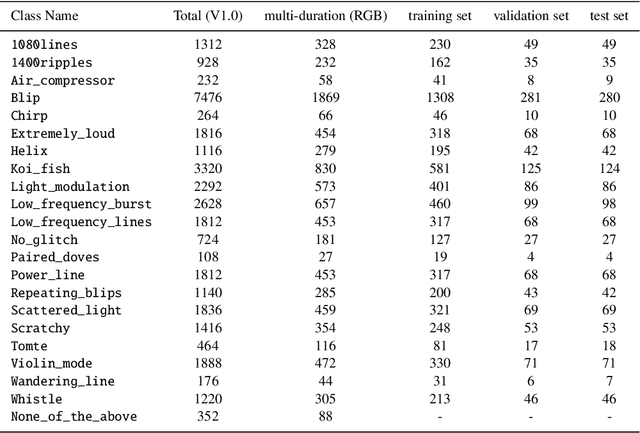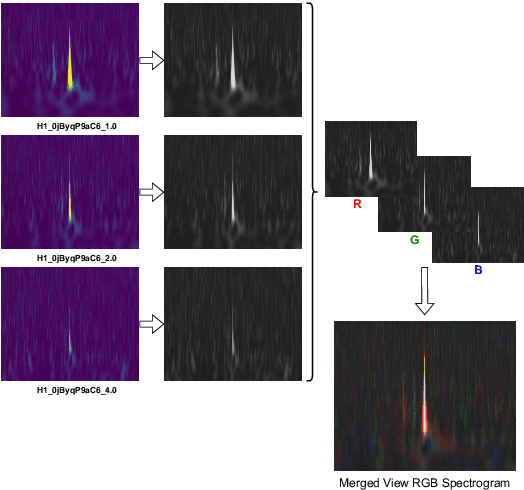Jianqi Yan
The University of Hong Kong
DeepGrav: Anomalous Gravitational-Wave Detection Through Deep Latent Features
Mar 05, 2025Abstract:This work introduces a novel deep learning-based approach for gravitational wave anomaly detection, aiming to overcome the limitations of traditional matched filtering techniques in identifying unknown waveform gravitational wave signals. We introduce a modified convolutional neural network architecture inspired by ResNet that leverages residual blocks to extract high-dimensional features, effectively capturing subtle differences between background noise and gravitational wave signals. This network architecture learns a high-dimensional projection while preserving discrepancies with the original input, facilitating precise identification of gravitational wave signals. In our experiments, we implement an innovative data augmentation strategy that generates new data by computing the arithmetic mean of multiple signal samples while retaining the key features of the original signals. In the NSF HDR A3D3: Detecting Anomalous Gravitational Wave Signals competition, it is honorable for us (group name: easonyan123) to get to the first place at the end with our model achieving a true negative rate (TNR) of 0.9708 during development/validation phase and 0.9832 on an unseen challenge dataset during final/testing phase, the highest among all competitors. These results demonstrate that our method not only achieves excellent generalization performance but also maintains robust adaptability in addressing the complex uncertainties inherent in gravitational wave anomaly detection.
Building Machine Learning Challenges for Anomaly Detection in Science
Mar 03, 2025Abstract:Scientific discoveries are often made by finding a pattern or object that was not predicted by the known rules of science. Oftentimes, these anomalous events or objects that do not conform to the norms are an indication that the rules of science governing the data are incomplete, and something new needs to be present to explain these unexpected outliers. The challenge of finding anomalies can be confounding since it requires codifying a complete knowledge of the known scientific behaviors and then projecting these known behaviors on the data to look for deviations. When utilizing machine learning, this presents a particular challenge since we require that the model not only understands scientific data perfectly but also recognizes when the data is inconsistent and out of the scope of its trained behavior. In this paper, we present three datasets aimed at developing machine learning-based anomaly detection for disparate scientific domains covering astrophysics, genomics, and polar science. We present the different datasets along with a scheme to make machine learning challenges around the three datasets findable, accessible, interoperable, and reusable (FAIR). Furthermore, we present an approach that generalizes to future machine learning challenges, enabling the possibility of large, more compute-intensive challenges that can ultimately lead to scientific discovery.
A Stock Price Prediction Approach Based on Time Series Decomposition and Multi-Scale CNN using OHLCT Images
Oct 29, 2024



Abstract:Recently, deep learning in stock prediction has become an important branch. Image-based methods show potential by capturing complex visual patterns and spatial correlations, offering advantages in interpretability over time series models. However, image-based approaches are more prone to overfitting, hindering robust predictive performance. To improve accuracy, this paper proposes a novel method, named Sequence-based Multi-scale Fusion Regression Convolutional Neural Network (SMSFR-CNN), for predicting stock price movements in the China A-share market. By utilizing CNN to learn sequential features and combining them with image features, we improve the accuracy of stock trend prediction on the A-share market stock dataset. This approach reduces the search space for image features, stabilizes, and accelerates the training process. Extensive comparative experiments on 4,454 A-share stocks show that the model achieves a 61.15% positive predictive value and a 63.37% negative predictive value for the next 5 days, resulting in a total profit of 165.09%.
On Improving the Performance of Glitch Classification for Gravitational Wave Detection by using Generative Adversarial Networks
Jul 08, 2022



Abstract:Spectrogram classification plays an important role in analyzing gravitational wave data. In this paper, we propose a framework to improve the classification performance by using Generative Adversarial Networks (GANs). As substantial efforts and expertise are required to annotate spectrograms, the number of training examples is very limited. However, it is well known that deep networks can perform well only when the sample size of the training set is sufficiently large. Furthermore, the imbalanced sample sizes in different classes can also hamper the performance. In order to tackle these problems, we propose a GAN-based data augmentation framework. While standard data augmentation methods for conventional images cannot be applied on spectrograms, we found that a variant of GANs, ProGAN, is capable of generating high-resolution spectrograms which are consistent with the quality of the high-resolution original images and provide a desirable diversity. We have validated our framework by classifying glitches in the {\it Gravity Spy} dataset with the GAN-generated spectrograms for training. We show that the proposed method can provide an alternative to transfer learning for the classification of spectrograms using deep networks, i.e. using a high-resolution GAN for data augmentation instead. Furthermore, fluctuations in classification performance with small sample sizes for training and evaluation can be greatly reduced. Using the trained network in our framework, we have also examined the spectrograms with label anomalies in {\it Gravity Spy}.
 Add to Chrome
Add to Chrome Add to Firefox
Add to Firefox Add to Edge
Add to Edge